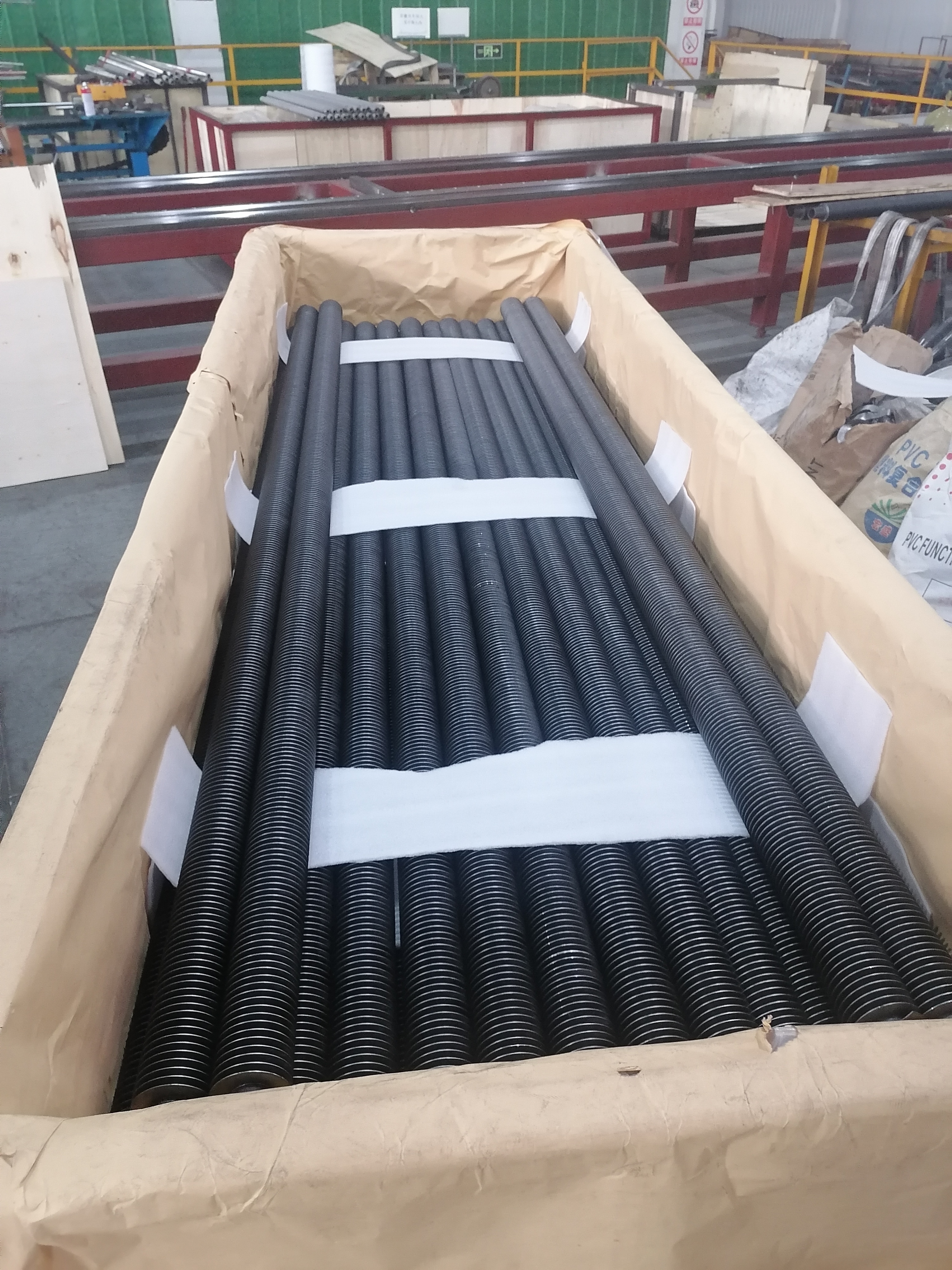Laser Welding for Carbon Steel Finned Tubes
Laser Welding for Carbon Steel Finned Tubes: Industry Expert Analysis
Executive Summary
Laser welding is redefining carbon steel Finned Tubes manufacturing, offering unmatched precision, speed, and cost-efficiency compared to legacy methods like TIG and MIG. Backed by industrial data and 15+ years of heat exchanger expertise, this comprehensive analysis explores technical advancements, economic benefits, and future trends, positioning laser welding as the go-to solution for industries prioritizing performance and sustainability.
Why Laser Welding for Carbon Steel Finned Tubes
Microscopic Heat Control
Focused laser beams reduce Heat Affected Zone by 50%, minimizing thermal distortion and preserving material integrity in carbon steel applications.
3x Faster Production
Achieve 25 m/min welding rates vs. 8 m/min for traditional TIG welding, dramatically increasing throughput for large-scale projects.
Enhanced Durability
Higher tensile strength (640 MPa) and elongation (22%) ensure superior performance in demanding industrial environments.
Laser Welding for Carbon Steel Finned Tubes Technical
Optimal Laser Welding Parameters for Carbon Steel Finned Tubes
| Parameter | Laser Welding | TIG Welding | Impact |
|---|---|---|---|
| Power (kW) | 2–4 | 1–3 | Deeper penetration, fewer passes required |
| Speed (m/min) | 15–25 | 5–12 | Faster production cycles, lower labor costs |
| Beam Focus (mm) | 0.2–0.5 | N/A (Diffuse arc) | Precision weld seams, minimal material waste |
| Energy Efficiency | 75-85% | 45-60% | Significant energy savings in continuous operation |
Case Study: A major boiler manufacturer reduced weld defects by 92% and increased production output by 40% after switching to pulsed laser systems with real-time thermal sensors for their carbon steel finned tubes.
Carbon Steel Finned Tubes Performance Showdown: Laser vs. TIG vs. MIG
Table 1: Mechanical Properties Comparison (ASTM A179 Carbon Steel)
| Metric | Laser Welding | TIG Welding | MIG Welding | Advantage |
|---|---|---|---|---|
| Ultimate Tensile Strength | 640 ± 15 MPa | 600 ± 20 MPa | 580 ± 25 MPa | +6.7% vs. TIG |
| Yield Strength | 420 ± 10 MPa | 400 ± 15 MPa | 380 ± 20 MPa | +5% vs. TIG |
| Elongation | 22 ± 2% | 20 ± 3% | 18 ± 3% | +10% vs. TIG |
| HAZ Width | 1.5 mm | 3.0 mm | 4.2 mm | -50% vs. TIG |
| Corrosion Resistance | Excellent | Good | Fair | Superior in harsh environments |
Source: Journal of Advanced Manufacturing & Heat Exchanger Technology Review (2024)
Key Insight: Laser welding outperforms both TIG and MIG in mechanical strength, thermal efficiency, and corrosion resistance - critical factors for high-pressure and corrosive applications in finned tube heat exchangers.
Laser Welding for Carbon Steel Finned Tubes Cost-Benefit Analysis
Table 2: Operational Efficiency & Economic Metrics
| Factor | Laser Welding | TIG Welding | Savings & Benefits |
|---|---|---|---|
| Cycle Time per Tube | 35 seconds | 105 seconds | 67% faster production |
| Energy Consumption | 0.75 kWh/unit | 1.2 kWh/unit | 37.5% energy reduction |
| Labor Cost (100 units) | $150 | $450 | $300 saved per 100 units |
| Defect Rate | <1% | 5% | 80% fewer rejects |
| Maintenance Cost/Year | $8,000 | $15,000 | 47% lower maintenance |
| Tooling Consumption | Low | High | Reduced consumable costs |
Data Source: Frost & Sullivan Industrial Manufacturing Report 2023
ROI Breakdown for Medium-Scale Manufacturing
- Initial Investment: $200k–$500k for complete laser systems vs. $50k–$100k for TIG setups
- Payback Period: 2–3 years through labor savings, energy efficiency, and reduced scrap rates
- Annual Operating Savings: $75k–$150k for typical production volumes of 10,000+ finned tubes
- Quality ROI: Reduced warranty claims and enhanced customer satisfaction
Overcoming Adoption Challenges
-
High Upfront Costs
- Strategic Solution: Equipment leasing models, government grants for green manufacturing, and phased implementation plans
-
Material Compatibility & Weldability
- Technical Solution: Hybrid laser-arc welding for high-carbon steels (0.3-0.6% C) to prevent cold cracking and improve microstructural integrity
-
Operator Skill Gaps
- Training Solution: VR-based training programs, certified laser welding courses, and automated parameter optimization software
-
Process Integration
- Implementation Solution: Modular laser systems that integrate with existing production lines and robotic automation
Industry Leaders Spearheading Adoption
Vallourec
Reported 30% faster heat exchanger production and 25% material savings after laser welding integration for carbon steel finned tubes.
Tenaris
Achieved 15% longer service life in corrosive offshore oil rig applications through superior weld quality and reduced HAZ.
Heat Exchanger Corp
Reduced energy consumption by 45% in finned tube bundle manufacturing while improving heat transfer efficiency by 18%.
Laser Welding for Carbon Steel Finned Tubes Future
- AI-Powered Quality Control: Machine learning algorithms for real-time defect prediction and automated parameter optimization, reducing human intervention by 70%
- Green Laser Technology: Next-generation lasers reducing energy consumption by 20% while increasing power density (2025 commercial availability)
- Hybrid Manufacturing Techniques: Combining laser welding with friction stir welding and additive manufacturing for complex finned tube geometries
- Smart Monitoring Systems: IoT-enabled sensors providing real-time weld quality data and predictive maintenance alerts
- Advanced Materials Compatibility: Expanded capability for welding high-alloy steels and dissimilar material combinations in heat exchanger applications

Laser Welding for Carbon Steel Finned Tubes
Laser welding represents a fundamental transformation in carbon steel Finned Tubes manufacturing, not merely an incremental improvement. With quantifiable gains in production speed (3x faster), mechanical properties (6.7% stronger), and operational efficiency (37.5% energy reduction), this technology delivers compelling ROI within 2-3 years. As AI integration and green laser technologies mature, early adopters will establish significant competitive advantages in heat exchanger manufacturing, positioning themselves as leaders in both innovation and sustainable industrial practices.

